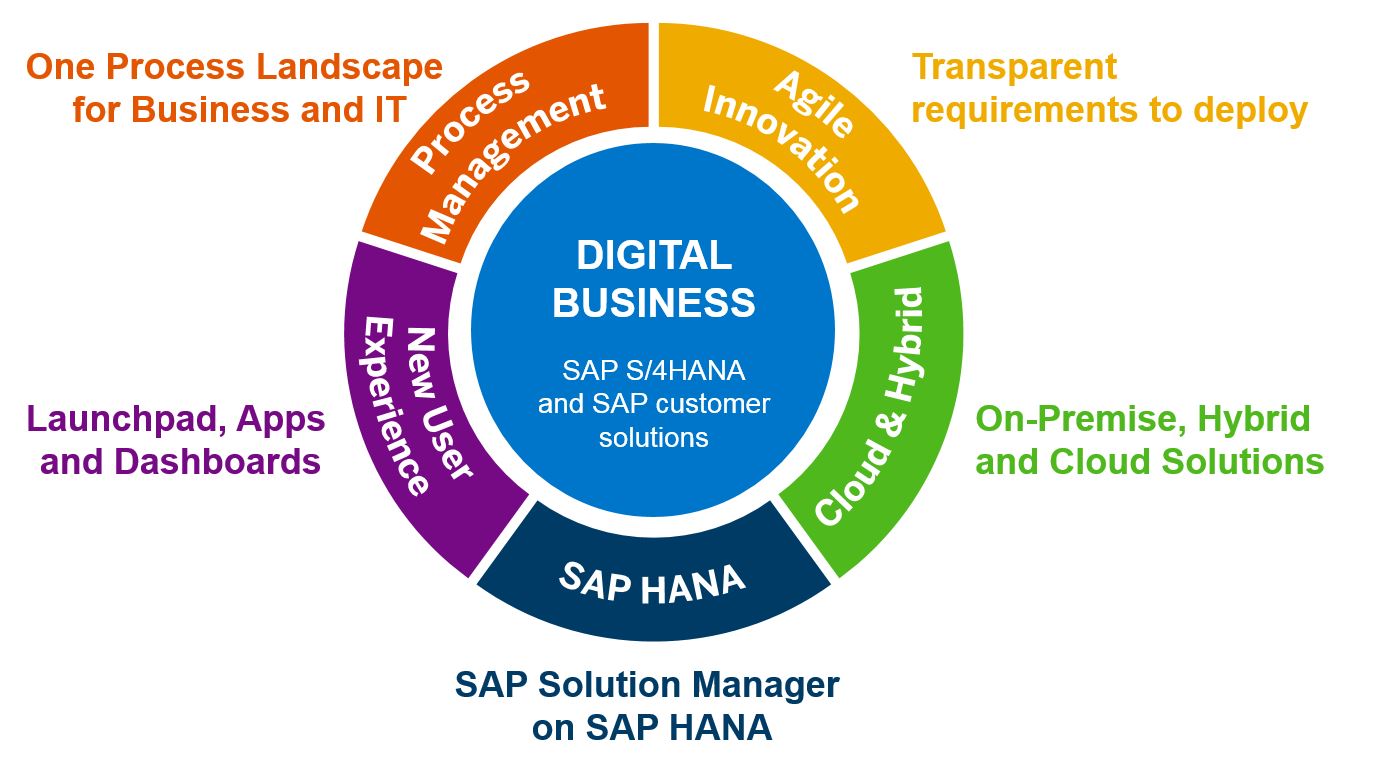Start a Blog, Drive Traffic, and Eventually Make Money in 9 Steps

Starting a blog is less about being lucky and more about being passionate about the subject. While a majority of individuals think that blogging is a tool primarily used for making money, a good or rather a great blog takes a long time to initiate and even longer to establish itself.
In this article, we would discuss about blogging in detail while throwing ample quantities of light on the modus operandi behind the same. The information offered though this post can be leveraged by both businesses and individuals for getting started with blogging.
What is Blogging?
Before delving any deeper into this discussion, it is important to understand more about blogging and how can it qualify as an ideal career choice or rather an option for making money. Put simply, Blogging is a concept or rather an act where the concerned individual or a team shares certain ideas, instances, and stories with the entire world— in an effort to channelize it better. Upon getting greater the number of engagements, the blog is expected to earn more and get recognized by a wider audience base. However, in addition to money, one can also associate blogging with fame, improved social impact, thought documentation, and knowledge sharing.
What are Steps involved when it comes to Setting up a Full-Fledged Blog?
Before putting an idea to use for kick-starting a blog, it is important to address the most important steps associated with this highly diversified process.
- Before moving any further the concerned individual must zero in on the blog niche
- The next step however involves selecting a platform for starting with the blog
- Once the platform and blog niche are selected, it is important to finalize the domain name, consider purchasing the same, and even think about the hosting providers.
- The next step involves selecting the perfect hosting client to purchase the facilities from
- Once these aspects are taken care of, it is important install the blog, get it designed, add specific themes to the same, and make it stand out
In this step-pronged discussion, we would address each step in detail and offer solutions pertaining to the same. In due course of time, we would also be recommending certain services for the concerned step but the individual is always free to make use of other service providers, as per preferences. Every step, however, will have an introduction, a suggestive segment, and finally the best solution for someone who is interested in blogging.
Step 1— Select the Blogging Platform
Introduction
This has to be the first step as bloggers need to understand the importance of a blogging platform beforehand. Although, the first step can be great stepping point for web designers and developers who often dupe individuals into hiring a select set of services for creating a brand new website, more often than not a person can easily rely on WordPress for getting the job done. It wouldn’t be wrong to presume that having WordPress in the mix of things can simplify a lot of stuffs for the prospective bloggers.
Suggestive Segment
The first and foremost idea that comes to the mind of a prospective blogger is to start things over a free platform, similar to the likes of Tumblr, Blogspot, and Medium. However, one suggestion while selecting the blogging platform is to refrain from these alternatives as these offer minimal control over the design, lack even the basic customizations, and impose limitation on the user, in regards to adding videos and images. Moreover, for those who are interested in building a brand image with the blog, free platforms can be extremely frustrating as they do not support customer domain identities.
Best Solution
For a person interested in starting a functional blog, WordPress is probably the best solution in the online market. While it’s actually free to start with, the customization options are infinite and even quite simple to execute. Moreover, the layout offered by a basic WordPress theme is easy on the eye and extremely compatible with the readers in picture. In addition to that, there are a host of other virtues that work in favor of WordPress, including the compatibility with a cheaper domain name and hosting service, easy to use interface, host of free themes in excess of 5000, and lastly the worldwide acceptance with more than 91 percent blogs using this blogging platform.
Step 2— Select the Domain Name
Introduction
Having a domain name is quite important for a business and more so for one that’s concentrating purely on blogging. In a layman’s language, domain name is more like the house address which the readers can associate the blog with. However, for starters it is important to understand that before finalizing the domain name, the blog niche or rather the topic needs to be selected. Only then will a business be able to focus precisely on the audience requirements. For example, a person who is interested in writing about food wouldn’t name his or her blog as ‘The Travel Diary’. The blog topic and the domain name must be in sync for the blog to prosper.
Suggestive Segment
In order to simplify the entire process of domain name selection, the prospective blogger must have a clear mind. To start things, the person must jot down his or her interests followed by things or activities he or she is good at. One can also make room regarding the things which the person would be interested in learning about. Therefore, brainstorming for a couple of minutes would automatically reveal the most compatible topic or rather the most appropriate the domain name.
Best Solution
Our advice would always be to go for a name that resonates with passion, ambition, and enthusiasm. What’s interesting to note is that there are host of service providers like Big Rock and Go Daddy that have an exquisite collection of domain names to choose from. However, with people starting blogs like anything, a person with knack for blogging must quickly head over to any one of these websites and lock in the desired domain name.
Step 3— Arrange for Hosting and WordPress Platform
Introduction
Before we move any further, a person who is starting with a blog from scratch must first understand what hosting means. In simple terms, hosting is the link between a regular content management system or rather an offline website and the online world. Therefore, in absence of hosting, the blog wouldn’t be able to cater to audiences online and it would be more like a word document of sorts. Apart from offering online compatibility and connectivity, web hosting in regards to WordPress is also expected to save the blog images, files, and other content— securely enough.
Suggestive Segment
While there are good hosting service providers like Bluehost that offer tons of secured and compatible attributes at highly competitive rates, there are even bad to worse hosting companies which render slowness to the website. A new blogger must understand that for a blog to be successful it needs to load fast as online readers have a very short attention span. Therefore, it is advisable to check hosting reviews before finalizing on the concerned service provider.
Best Solution
Bluehost, in all readiness, acts as the best hosting solution for any blogger, regardless of the niche. In terms of benefits, Bluehost also offers free domain registration followed by round the clock customer support, SSL certification for verifying the legitimacy of the website, and even an one clock WordPress installation option for someone who isn’t a tech savvy individual. What’s interesting to note is that one can avail all these and more, starting at a mere $2.75 per month.
Step 4— Blog Customization
Introduction
Now when the prospective blogger has taken care of the hosting and domain name specific requirements, it is important to open the concerned WordPress and decorate the same for pulling in viewers. In regards to the physical world, blog customization is more like decorating the household interiors once the construction is over.
Suggestive Segment
WordPress themes come in as they offer a new look and even a set of additional attributes to the given blog. While there are a host of themes available in the market, one must always opt for a clutter free and simplified interface followed by the availability of mobile responsiveness, speed optimization, ease of customization, in-built short codes, and an SEO ready layout for a better traction. For someone who isn’t interested in setting up a new theme, it is quite easy to install one by heading straight to Appearance, then selecting Themes, and clicking on Add New.
Best Solution
For someone looking to explore an extended world of themes and other compatible design options, Themeforest is a great way to start. This platform has many free and even premium themes that can offer a lot of weightage and value to the concerned website. Over here, selections can be made on the basis of HTML templates, WordPress templates, domain or niche categories, and a host of other requirements.
Step 5— Adding Plugins
Introduction
Now when the blog setup, including the more technical aspects are taken care of, it is important to move further, in regards to add-ons. WordPress plugins, therefore, qualify as the website must haves, especially for those who want to add some substance to their blogs and web pages.
Suggestive Segment
Not every plugin is alike and it would take some practice to discriminate between the necessary and the avoidable ones. While we would discuss more about the plugin installation process later in this segment, there are certain plugins like WordPress SEO, Short Pixels, and Akismet which actually come in handy. For those who are interested in setting up an ecommerce website alongside a fully functional blog, the WooCommerce plugin can be of relevance. Apart from that there is Jetpack and W3 Total Cache plugins which can make life easier for a new blogger.
Best Solution: Installing the Plugins
As mentioned previously, WordPress comes across as an innovative CMS platform that works best in association with handy plugins. However, for a new blogger it is important to know more about the installation process and that too in detail. To be exact, there are three separate ideas for installing WordPress plugins, including ‘Search and Install’, ‘Upload and Install’, and even FTP.
The first approach i.e. Search and Install involves bloggers searching the name of a specific plugin and installing them via Plugin and Add New tab. Once the plugin is identified, it can just be installed and activated, depending on user preferences. A plugin can also be separately uploaded after downloading which can be installed and used later. One tip which is quite handy to the new bloggers is that it is important to configure settings upon installing the plugin.
There is also a separate provision where one can install all the necessary plugins via third-party websites. The best idea here is to download the same from the concerned library, unzip the same, and start using it via the FTP software in play. The best solution however is relative to the user requirements and only the most important plugins, as mentioned previously, should be installed at the beginning. One can always experiment at a later point in time.
Step 6— The Content Plan
Introduction
Now when we have setup everything, it’s time the blogger concentrates on the most important job in hand i.e. to add content. However, one cannot randomly go about adding content and there has to be a definite plan for going about the process.
Suggestive Segment
Before moving any further, it is important to understand the nooks and crannies of the first post. Firstly, the Title Area needs to be decided followed by the content and the media area. Once the necessary things are uploaded, it is the publishing strategy that comes into the play.
Best Solution
The best strategy for creating a content plan is to make use of the Trello planning system which is more of a board and allows bloggers to create a complete checklist of sorts.
The Trello board allows users to write down the points and the content creation plan that’s necessary for going about blogging. However, there many steps to creating the perfect first post which can help the blogger pull in a lot of individuals into the mix. Firstly, the content must be engaging and should be able to knit a story of sorts. In addition to that, the blogger must understand that it is prudent enough to add in a lot of words, especially at the beginning.
The concept and even the tone need to be precise and direct. Active sentence formations are also necessary. When it comes to the images, it is necessary to use entities which aren’t having copyright issues to work with. Copying and pasting images from Google isn’t a good approach anymore. Lastly, for those looking to offer video content to the readers, embedding stuffs is a good way to go.
Step 7— Adding the Necessary Blog Pages
Introduction
A well-drafted blog cannot be a one-page thing and there has to be a definite plan towards adding a bit more to the recently created website. This is why; adding pages to the blog is more of an important step and less of a choice.
Suggestive Segment
For starters an About Us page is important, just to offer all the necessary insights to the concerned readers. While this page will primarily furnish all the details, bloggers can also make use of the Contact Form 7 for accentuating this process.
Best Solution
The jetpack contact form is a great way to keep things moving as this plugin, if and when installed, can help the blogger add all the necessary information to the blog page. This eventually makes the blog look complete and pulls in more readers.
Now when we have addressed the elementary aspects of setting up a blog, it is important to understand a bit more about this process. A Blog in itself isn’t as powerful as it seems. Bloggers cannot just make money by publishing stuffs online and there has to be definite procedure to how these things work. The process of pulling audience is important as any blog, rather a website that gives out some information, can make money in a host of ways. Be it the AdSense account or the usual tricks of affiliate marketing nothing works better than a sizeable audience base clinging on to the concerned blog.
Step 8 – Getting the Blog up and running
Part 1— Driving Traffic to the Blog
Introduction
Now when the first blog post is live it is necessary that the matter reaches an extensive audience base in order to become popular. Driving traffic to the blog isn’t rocket science but it isn’t a simple process either.
Suggestive Segment
Getting popularity and attention require a strategic approach towards blogging. There are a few techniques which can help readers in this matter. For those who are looking to drive in more people can opt for social media exposure which comes across as a necessary evil. Once the blogger starts adding posts to the blog, he or she can share the same with the social media users in order to gain necessary traction. Another idea would be to make use of social bookmarking websites and discussion forums for gaining additional traction.
Best Solution
While every solution is as effective as the other, the most tried and tested idea would be to opt for guest blogging. Guest blogging is one strategy where the concerned blogger posts his or her articles of websites of repute, in order to direct traffic to the concerned blog. While this process requires practice, the results are mostly remarkable in nature. Posting rewarding comments in niche forums and even blog commenting is a decent way to achieve better traffic levels.
Part 2— Adding SEO to Boost Traction
Introduction
Now when a lot of possibilities have been discussed in regards to driving people to the blog, it comes down to the final step that can change the fortunes for a blogger, especially from the SEO perspective. While starting off with SEO optimized content i.e. using keywords and meta tags comes across as a pretty good start, there has to be a definite SEO-specific plan for understand more about the basics of money making in general.
Suggestive Segment
Some of the better ways to go about Search Engine Optimization is to make use of On-Page and even Off-page SEO techniques. While the latter involves keyword placements, content quality, and more, Off-Page SEO is mostly restricted to getting indexed and even crawling. Off-Site SEO also involves getting backlinks in return for submit a guest post technology.
We’ll start with Google. Head to Google search and write “(Your niche) write for us.” I’ll use personal finance for this example.
You can also use phrases like:
- “Write for us: (Your niche)”
- “Submit a guest post (Your niche)”
- Submit a guest post Technology
- “(Your niche) guest posting”
- Write for us Technology
Best Solution
The concept of SEO, in regards to blog promotion is an expansive topic where no solution is the best and it is important to make room for everything in order to succeed. However, besides doing extensive keyword research and banking on user experience, it is also important to take a note of social signals and social proofs for understanding what works and what not. The key aspect, towards every SEO-specific approach would be to amplify the social experience associated with the blog or the website in general. This involves taking care of the website design, site loading considerations, readability, and even website navigation.
Step 3— Ascertaining the Marketing Strategies
Introduction
There are many marketing techniques which can pave way for a successful blog. However, the likes of email marketing are definitely worth considering courtesy the exceptional reach on offer. That said, there has to be specific strategy for addressing the Email Marketing requirements, in regards to a project or blog promotion campaign.
Suggestive Segment
For addressing the marketing requirements pertaining to a blog, it is necessary to primarily on social media, forum, offline, and lastly email marketing. Out of these few strategies, Blog promotion via email marketing happens to be the best choice as it’s highly rewarding and even easy to execute.
Best Solution
The best way forward is to make room for a great and functional email list creator after which dedicated emails can be sent over to the concerned accounts. Convert Kit is probably the most preferred solution for achieving the feat of interacting with numerous individuals in one go. The initial setup process is extremely simple and the blogger needs to add the website URL and company name to the dashboard for kick-starting the process. While the mail schedules can be determined, the auto responder doesn’t allow the visitors to go empty handed.
Step 9 – Making Money from the Blog: An Exhaustive Discussion
Now when the entire blog setup and traffic related aspects have been discussed, we need to come around the focal point of financial gains. A blogger who has recently jumped onto this bandwagon must realize the basics of earning money and even the strategies that can be used for earning from the blog. Some of the more obvious ways include:
- AdSense
Basically, this is a highly potent technique where the blog owner gets paid a certain amount if the ads visible on the platforms are seen and clicked. While Google AdSense is the more obvious choice, other ad networks can also be contacted.
- Direct Adverts
Besides AdSense, direct advertisements are quite effective in terms of making money. While this is more of an intermediate money making strategy, the best thing about direct adverts is that there is no pay per click scheme on offer similar to the AdSense working module. Put simply, this is probably the most stable and rewarding technique that can be used even by the novice bloggers.
- Affiliate Marketing
This point brings us to the all-important discussion regarding a highly potent and effective blog-centric money making technique. Firstly, this can also be considered as one of the most profitable techniques which do require advanced and intermediate level skills. Affiliate advertisements are those where the blogger adds in reviews corresponding to certain products and services which are in the form of clickable links. Once the reader makes a purchase using the blog links, a commission is automatically credited to the blogger.
- Selling eBooks
For someone who is interested in giving out some knowledge regarding a product or service, this money making option can certainly come in handy. Firstly, the focus here is to write something that can add some value and later transform it in the form of a PDF document. The next step involves marketing it properly via social platforms which in a way can add value and help the concerned blogger make some money.
- Launching Programs
Another option for the bloggers is to start a program of sorts, i.e. either a photography program or a fitness program or anything the concerned person is good at. Selling these programs at a subscription rate is also a handy way of earning some money from the blog. However, in this case, only good and honest information needs to be put out.
While these are some of the more obvious techniques for making money, one can also rely on sponsorship programs, reviews, and paid promotions for making the most out the blog. However, before even strategizing the money making aspect, it is important to promote the blog in the best possible manner while driving a lot of traffic to the same.
In the next few sections, we shall talk about the blogging FAQs, including some burning blog setup questions, traffic related queries, and even other relevant money making questions.
Blogging FAQs
Blog setup
Q1. What would be the Initial Cost of Setting up a Blog?
A1. While there is no fixed cost when it comes to setting up a blog, the basic initial setup charges might be somewhere in the ballpark of $80. However, there might be some additional costs depending on the themes, design elements, plugins, and other utilities associated with the blog.
Q2. What would be the Preferred Hosting Client?
A3. In all readiness, we would be vouching for Bluehost as the go to hosting client for a host of reasons. While the existing membership costs are quite competitive, this hosting client also makes room for free domain name registration, free SSL certification, and an entire gamut of other exceptional features.
Q3. Should there be a Designer for adding Specific Elements?
A3. For someone who is working alongside WordPress as the preferred platform, a dedicated designer isn’t always required. However, despite the availability of several free themes on offer, it is advisable to make room for some premium themes from Theme Forest in order to make the blog look great and credible. To be exact, WordPress comes across as a platform that simplifies proceedings for the blogger and makes it easier to add designs and other functionalities to the blog.
For someone who would be interested in purchasing category-specific themes, Themeforest comes across as the best possible option.
Q4. How long does it take to start a Blog?
A4. If a paid domain name is to be selected and other additions are to be done, it might take somewhere between an hour and 45 minutes to get a fully functional blog up and running for the individuals. However, there are certain free blogging platforms which can be setup in less than 10 minutes. That said, if professional traction is one the bloggers’ mind, they should refrain from using these free platforms as there is zero customizability and control options for the blog owners.
Content Plan
Q1. Who should the Blogger Focus in regards to Content Creation?
A1. Eventually, it all pans down to the niche the blogger is working with. For someone who is interested in shelling out usable information, it is necessary to understand more about the market and draft posts accordingly.
Q2. How Frequently Should I Publish Posts?
A2. It is important to be consistent with blogging, in order to make money out of it. Therefore, posting frequently i.e. at least twice per week should be the rule of the thumb. While some might argue that frequency isn’t of much importance, at least in 2019, we would still advice the bloggers to stick two or even three posts per week to keep the audiences engaged.
Q3. Should there be a Pre-defined Blog Length?
A3. As mentioned previously, the blogs should be slightly longer in order to make Google index them better. A good head start would be somewhere around 1500 words and take it from there, depending on the audience base.
Q4. What Type of Posts Attract more Viewers?
A4. While anything that adds value is good, posts the offer listings, ‘How to’ info, interviews, and even biographies usually sell like hot cakes.
Attracting and Marketing
Q1. How to bring more Traffic to my Blog?
A1. While there are multiple strategies for pulling in more traffic, it eventually comes down to selecting the preferred audience base and connecting with them at an elementary level. Posting relevant queries and even answers to certain forums can certainly pulling in a decent amount of crowd. Apart from that, guest posting and successfully posting articles on websites with high DA can also get the ball rolling. For someone who is interested in pulling people directly from search engines, it is important to address the SEO strategy and add in relevant keywords. Social media is also a handy tool for popularizing stuffs but eventually it all pans down to how good the content is.
Q2. How good a Strategy is Email Marketing for Bloggers?
A2. Email marketing is certainly a go to option for a blogger regardless of his or her niche. However, the trick here is to create content that actually adds value and then push forth the same using an email list of sorts. The best service, at present, which can be used, is from Convert Kit which takes care of all the necessary stuffs related to email marketing and add to the results, almost exponentially.
Running the Blog and Making Money
Q1. How Exhaustive Should the blog be?
A1. The blog must not be a one-page entity and should have a sign up section, contact page, and certainly the about us section. Moreover, every page need to be SEO optimized for the holistic development of the blog.
Q2. What should be the typical Blog Entities?
A2. The blogger must include a decent logo, some good themes, and obviously functional plugins into the scheme of things. However, there has to be a complete set of free plugins for the blog to start functioning properly. Drip for marketing, WP Smush for compressing images, Yoast SEO for obvious reasons, SumoMe for capturing email forms and adding social buttons, and Super Cache for making the blog load faster.
Q3. Can a Blog seriously make Some Money?
A3. Yes, it can but only if the SEO has been taken care of. Driving traffic to the blog is of paramount importance and this is where the entire money making concept is hidden. Be it making money out of Google AdSense or affiliates, consultation, and product creation, it eventually pans down to how many people are visiting the blog on a daily basis.




